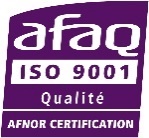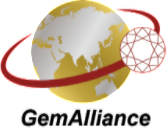
Pearl identification report
Identification report
Unique reference number
The Laboratoire Français de Gemmologie gives a unique reference number to each item submitted for examination. This number identifies the item at each stage of analysis.
Date
The date of the report is the date when analyses are completed and when the report is issued.
Identification
The identification refers to the type of pearls which have been analysed
Environment
The environment specifies if the pearls are freshwater pearls or saltwater pearls.
Weight
The weight (mass) of pearls is shown in carat weight with a precision of two decimals. The third 9 after the decimal point is rounded up to the nearest hundredth. For instance: 0.9990 will be shown as 1.00 carat, 0.9989 shown as 0.99 carat. The weight of natural pearls is expressed in grains (1 grain = 0.25 ct). If the item is a jewel set with pearls, then it is weighed in grams.
Number of pearls
The number of pearls written on the report gives an indication of the quantity which has been analysed. The pearls set on a clasp are never counted and analysed.
Colour
- The colour of a pearl is determined by comparing it to our pearls master set. You will find details in this article (https://www.laboratoire-francais-gemmologie.fr/2019/07/15/nouveau-code-de-couleurs-pour-le-lfg/)
Lustre
The lustre scale ranges from : Excellent – Very good – Good – Poor
Shape & dimensions
The shape and dimensions describe the external appearance of the pearl or diametrical variation of a piece of jewellery.
Treatments
Treatments will enhance the colour of the pearls. They are mentioned in the report when appropriate.
Photograpy
A high resolution photography shows the pearl/necklace on its arrival in the laboratory (dimensions in the photo are not binding but as representative as possible).
Comments
It is in the comments section that the LFG provides additional information related to the analysis and to the characteristics of the piece of jewellery.




